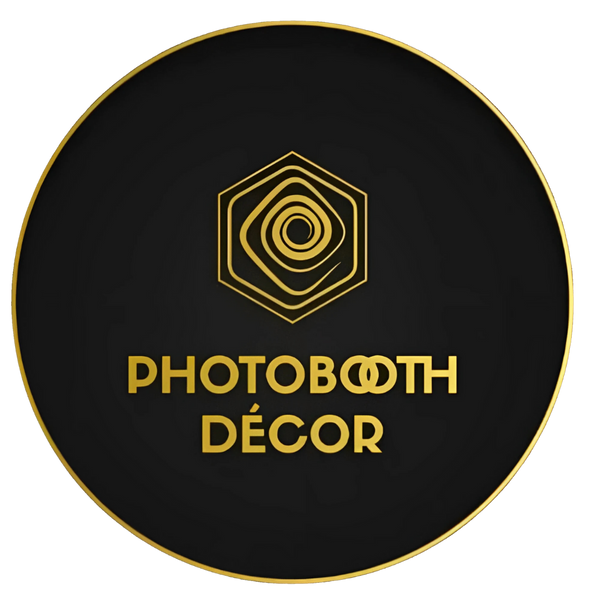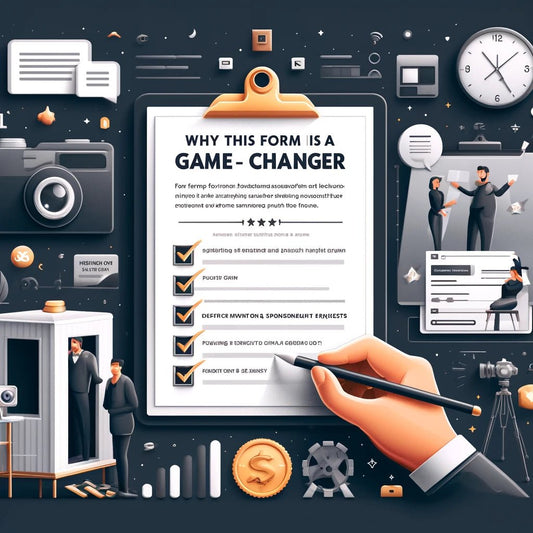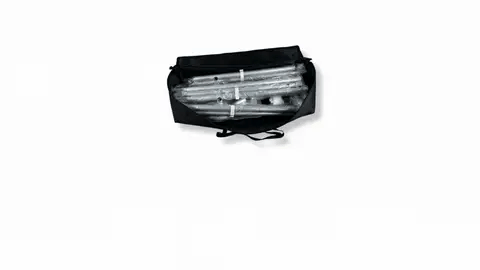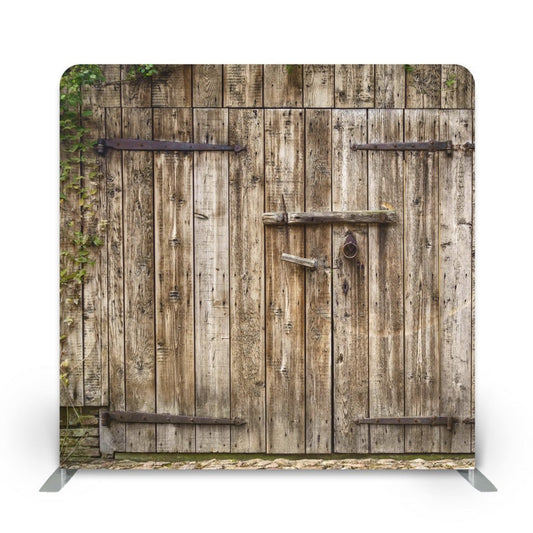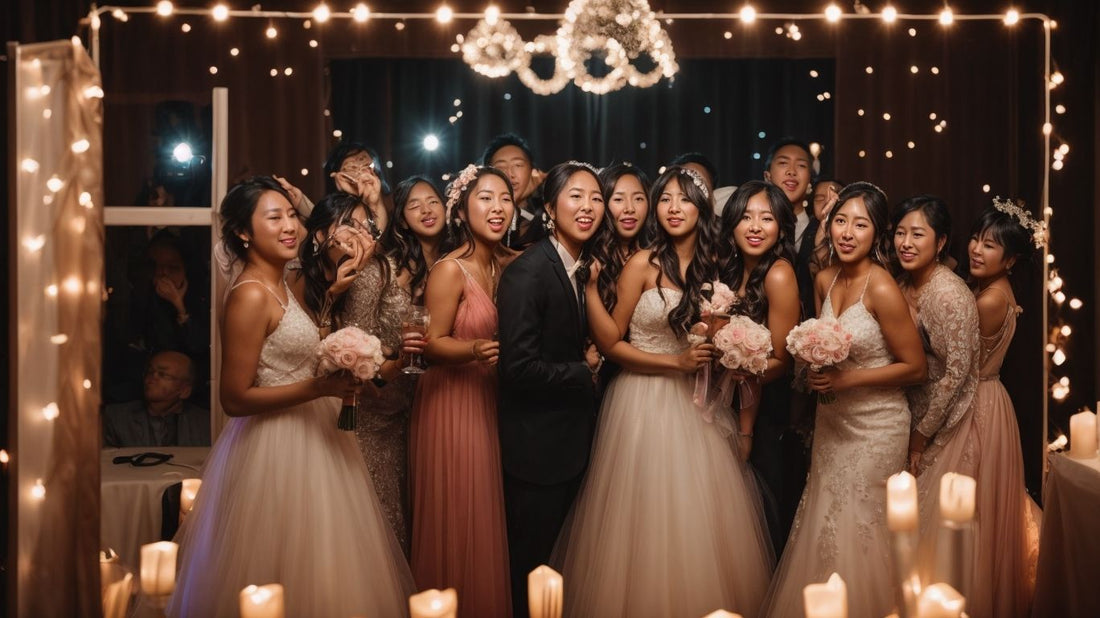
Enhance your wedding photos with professional photo booth lighting
Share
.jpg)
Wedding photo booth lighting plays a crucial role in capturing beautiful and memorable moments during a wedding celebration. Understanding its importance and implementing the right lighting techniques can make a significant difference in the quality of the photos. There are various types of lighting that can be used in wedding photo booths, such as natural light or artificial light, continuous lighting or strobe lighting. Each type has its own advantages and considerations. Several factors need to be taken into account when planning the lighting for a wedding photo booth, including the location and venue, the desired ambiance and theme, and the time of day. These factors can influence the choice of lighting equipment and the setup to create the desired atmosphere and visual effects. To achieve the perfect lighting in wedding photo booths, there are a few tips that can be followed, such as proper placement of lights, balancing light intensity, creating different lighting zones, and utilizing light modifiers. These techniques can enhance the overall aesthetic and ensure that the subjects are well-illuminated. It is also important to avoid common mistakes in wedding photo booth lighting, such as using incorrect color temperatures or overexposing the subjects. Testing and preparation are vital steps in ensuring that the lighting setup is optimal and aligned with the couple's vision. For couples who want to ensure the best lighting for their wedding photo booth, hiring a professional lighting expert can prove to be a valuable investment. These experts have the knowledge, experience, and equipment to create stunning lighting setups that will capture cherished memories for years to come.
Understanding the Importance of Wedding Photo Booth Lighting
When it comes to wedding photo booths, understanding the importance of wedding photo booth lighting is crucial. Proper lighting can make or break the quality of the photos. It sets the mood, highlights the subjects, and enhances the overall ambiance of the booth. To achieve the desired results, consider the following factors:
- Lighting quality: Use soft, diffused lighting to minimize harsh shadows and create a flattering effect.
- Placement: Position the lights strategically to eliminate glare and ensure even lighting coverage.
- Color temperature: Match the lighting to the theme and atmosphere of the wedding for a cohesive look.
- Consistency: Maintain consistent lighting throughout the event to maintain a cohesive aesthetic in the photos.
Types of Lighting for Wedding Photo Booths
When it comes to creating the perfect ambiance for your wedding photo booth, lighting plays a crucial role. In this section, we'll explore the various types of lighting that can elevate your wedding photos to a whole new level. From the enchanting glow of natural light to the precise control offered by artificial light, we'll uncover the unique qualities and effects of each. We'll compare the continuous lighting, which provides a steady illumination, to the dynamic bursts of strobe lighting. Get ready to discover the key to capturing picture-perfect moments!Natural Light vs Artificial Light
When it comes to wedding photo booth lighting, you have the option of choosing between natural light and artificial light. Let's compare the key differences between the two:
- Natural light: Also known as light from the sun or other natural sources, it has the ability to create a soft and warm ambiance in wedding photos, especially during the golden hour.
- Artificial light: This includes various lighting equipment such as strobes, continuous lights, and LED panels. Using artificial light gives you more control over the lighting conditions, allowing you to achieve specific effects and moods.
Both natural and artificial light have their respective advantages and can be utilized to enhance the beauty of wedding photos. The choice between the two greatly depends on the desired outcome and the available lighting conditions.
Let me share a story with you. Once, I had the opportunity to photograph a wedding that took place indoors with limited natural light. In order to ensure well-lit photos, I employed a combination of natural light from the large windows and strategically positioned artificial lights. By doing so, I was able to capture stunning images that perfectly balanced brightness and warmth.
Continuous Lighting vs Strobe Lighting
- Continuous lighting and strobe lighting are two common types of lighting used in wedding photo booths. Here are some factors to consider when deciding between the two:
-
Continuous Lighting:
- Provides a constant light source throughout the photo session.
- Allows for easy visualization of the lighting effects before taking the shot.
- Provides a natural and flattering lighting for subjects.
- Can be bulky and generate heat, especially if using traditional tungsten lights.
- May require more power and energy compared to strobe lighting.
-
Strobe Lighting:
- Produces a burst of light when the photo is taken.
- Offers more control over the lighting intensity and direction.
- Enables freezing motion, perfect for capturing candid moments.
- Lighter and more portable, making it easier to move around the venue.
- Requires separate equipment like flash units, triggers, and modifiers.
Factors to Consider in Wedding Photo Booth Lighting
When it comes to wedding photo booth lighting, there are several important factors to consider. From the location and venue to the ambiance and theme, and even the time of day, each element plays a crucial role in creating the perfect atmosphere. Whether you're aiming for a romantic evening glow or a vibrant daytime setup, understanding these key factors will help you achieve the ideal lighting for your wedding photo booth.Location and Venue
When it comes to wedding photo booth lighting, the location and venue serve as fundamental factors in establishing the perfect atmosphere. The adequacy of indoor venues may necessitate supplementary lighting arrangements to illuminate the space and draw attention to the booth. Conversely, outdoor settings present an opportunity to leverage natural light, resulting in breathtaking and flattering photographs. One should take into consideration the size of the venue and the arrangement of the photo booth area when devising the lighting setup. By experimenting with various angles and intensities, it becomes possible to achieve the most captivating and striking effects. It is important to bear in mind that appropriate lighting not only enriches the overall ambience but also contributes to the creation of remarkable wedding memories.
Fun fact: The choice of location and venue for a wedding can significantly influence the overall atmosphere and style of the occasion.
Ambiance and Theme
Creating the perfect ambiance and theme in wedding photo booth lighting involves careful planning and attention to detail. Consideration should be given to the location and venue, as different spaces may require specific lighting techniques. Time of day also plays a role, with natural light creating a different atmosphere compared to artificial light. Balancing light intensity is key to achieving the desired mood, and creating different lighting zones can add depth and dimension. Light modifiers such as diffusers or gels can be used to enhance the theme and overall ambiance. Hiring a professional lighting expert can ensure that the lighting design enhances the wedding photo booth experience.
| Factors to Consider in Wedding Photo Booth Lighting | Tips for Achieving the Perfect Lighting | Common Mistakes to Avoid | Importance of Testing and Preparation |
|---|---|---|---|
| Location and Venue | Proper Placement of Lights | Over- or Under-exposing the Photos | Rehearsing with the Couple |
| Ambiance and Theme | Balancing Light Intensity | Inconsistent Lighting Setup | Testing the Lighting Setup |
| Time of Day | Creating Different Lighting Zones | Using Inappropriate Light Modifiers |
Time of Day
The timing of the day is a critical factor in determining the lighting conditions of a wedding photo booth. The provided table showcases the impact of different time periods on the overall lighting within the booth:
| Morning (8am-11am) | The morning time offers soft and diffused natural light, which creates a romantic and ethereal atmosphere. Additional artificial lighting might be required to compensate for any shadows. |
| Afternoon (12pm-4pm) | During the afternoon, harsh sunlight can result in strong shadows. To achieve a well-balanced lighting setup, it is recommended to use a combination of natural and artificial light sources. |
| Golden Hour (5pm-7pm) | The golden hour, occurring between 5pm and 7pm, provides soft and warm light that adds a magical and flattering glow to photos. Minimal artificial lighting may be necessary during this time. |
| Evening (8pm onwards) | Due to the absence of natural light in the evening, it is essential to rely on artificial lighting sources. Various techniques such as spotlights and string lights can be used to create the desired ambiance. |
Tips for Achieving the Perfect Lighting in Wedding Photo Booths
Looking to capture stunning photos in your wedding photo booth? Look no further! In this section, we'll explore some expert tips to achieve the perfect lighting that will make your wedding photos come to life. From the proper placement of lights to balancing light intensity and creating different lighting zones, we'll uncover the secrets to creating a visually captivating photo booth experience. Get ready to elevate your wedding memories with these lighting tricks!Proper Placement of Lights
- To achieve the perfect lighting in wedding photo booths, it is crucial to ensure proper placement of lights. To do this, assess the layout of the booth, considering its size, shape, and any obstructions or features that could affect lighting placement.
- Position the main light source, such as a strobe or continuous light, to provide even illumination across the booth. This will serve as the primary light source.
- For a balanced light distribution and to reduce shadows, add fill lights in addition to the main light source.
- To highlight specific areas or props in the booth, use accent lights. These smaller lights will accentuate the desired elements.
- Maintain a cohesive atmosphere by considering the overall ambient lighting in the venue. Adjust the booth lighting accordingly to complement the venue's lighting.
- Finally, test and adjust the lighting setup by taking test shots. Make any necessary adjustments to achieve the desired lighting effect.
Balancing Light Intensity
To achieve perfect lighting in wedding photo booths, it is crucial to master the skill of balancing light intensity effectively. This can be accomplished by following a few key steps:
Assess the available lighting sources and their intensities in the venue.
Adjust the exposure settings on the camera to ensure a well-balanced overall brightness.
Utilize additional lighting equipment, such as reflectors or diffusers, to control and modify the intensity of the light.
Strategically position the lights to create a harmonious distribution of light throughout the photo booth area.
Regularly monitor the lighting during the event and make necessary adjustments to maintain a consistent level of light intensity.
Capture test shots and review the results to ensure that the lighting is evenly balanced and enhances the subjects.
Balancing light intensity is paramount as it prevents harsh shadows or blown-out highlights, resulting in exquisitely illuminated wedding photographs.
In 1931, George C. Ruff introduced the first portable flash unit, revolutionizing photography by enabling photographers to regulate light intensity and capture breathtaking images in any setting. Since then, the art of balancing light intensity has remained a fundamental aspect of professional wedding photography. Nowadays, photographers continue to refine this skill to create timeless and captivating wedding memories.
Creating Different Lighting Zones
- Creating different lighting zones in a wedding photo booth is crucial for capturing photos with depth and dimension. Here are the steps to achieve this:
- Identify key areas: Determine the different areas in the photo booth that require specific lighting, such as the backdrop, props area, and seating area.
- Select lighting equipment: Choose the appropriate lighting equipment for each zone based on the desired effect, whether it's soft and diffused or dramatic and focused.
- Position lights strategically: Place the lights at different angles and distances to create a distinct atmosphere in each zone.
- Adjust light intensity: Set the intensity of each light to ensure optimal exposure and prevent over or underexposed areas.
- Modify light modifiers: Use light modifiers like diffusers or reflectors to control the direction and quality of light in each zone.
Utilizing Light Modifiers
Using light modifiers in wedding photo booth lighting can greatly enhance the quality and ambiance of the photos. Here are some ways to effectively utilize light modifiers:
- Softboxes: Utilize softboxes to soften and diffuse harsh light, creating a flattering and even illumination on subjects.
- Umbrellas: Make use of umbrellas to reflect and spread light for a larger coverage area and a softer, more natural lighting effect.
- Reflectors: Utilizing reflectors to bounce and redirect light can fill in shadows and highlight certain areas of the subject.
- Gels: Incorporate gels to add color to the light, creating a specific mood or matching the overall theme of the wedding.
- Honeycomb grids: Utilize honeycomb grids to narrow the beam of light and focus on specific areas or subjects, creating dramatic effects.
By utilizing these light modifiers, photographers can achieve professional and stunning results in wedding photo booth lighting.
Common Mistakes to Avoid in Wedding Photo Booth Lighting
When setting up lighting for a wedding photo booth, it's important to avoid common mistakes to avoid in wedding photo booth lighting that can negatively impact the quality of the photos. Here are a few things to keep in mind:
- Avoid using harsh or direct lighting, as it can create unflattering shadows and overexposure.
- Don't rely solely on overhead lighting to create depth and dimension - incorporate additional lighting sources to avoid common mistakes to avoid in wedding photo booth lighting that can negatively impact the quality of the photos.
- Avoid using colored lighting that can distort skin tones and affect the overall look of the photos.
- Don't forget to test the lighting setup before the event to ensure everything is working properly and adjust as needed.
- Avoid positioning the lights too close to the background, as it can create unwanted reflections and glare.
Importance of Testing and Preparation
Prepare to capture picture-perfect moments at your wedding photo booth with the utmost precision and finesse. In this section, we'll explore the vital significance of testing and preparation. From rehearsing with the couple to ensuring the lighting setup is flawless, we'll uncover the key elements that contribute to a seamless and unforgettable photo booth experience. So, let's dive into the world of wedding photo booth lighting and discover how meticulous planning and meticulous testing can elevate your special day to new heights.Rehearsing with the Couple
Rehearsing with the Couple is a crucial element in achieving the perfect lighting for wedding photo booths. To ensure a flawless outcome, follow these steps during the rehearsal:
Testing the Lighting Setup
Testing the lighting setup in a wedding photo booth is crucial to ensure that the lighting is optimal for capturing beautiful and memorable moments. It is recommended to follow the steps below for testing the lighting setup:
- Arrange the backdrop and props as they will be during the actual event.
- Place the lights according to your plan, considering the location and desired ambiance.
- Fine-tune the intensity and direction of the lights to achieve the desired effect.
- Experiment with various lighting modifiers, such as diffusers or reflectors, to enhance the lighting quality.
- Capture test shots with a professional camera to assess the lighting and make any necessary adjustments.
- Review the test shots on a computer to confirm that the lighting is flattering and appropriately highlights the subjects.
Pro Tip: It is essential to thoroughly test the lighting setup well in advance of the wedding day. This allows ample time for any required adjustments or modifications. By doing so, you will be fully prepared to capture stunning photos throughout the event.
Hiring a Professional Lighting Expert for Wedding Photo Booths
- When it comes to wedding photo booths, hiring a professional lighting expert for wedding photo booths can make all the difference in capturing beautiful moments.
- Here are the steps to consider when hiring a professional lighting expert for wedding photo booths:
- Research: Look for lighting experts with experience in wedding photography.
- Portfolio: Review their portfolio to ensure their style aligns with your vision.
- Communication: Discuss your specific lighting needs and expectations with the expert.
- Expertise: Ensure the professional is knowledgeable about different lighting techniques for different settings.
- Equipment: Inquire about the lighting equipment they use to ensure it meets your requirements.
- Budget: Discuss pricing and ensure it aligns with your overall wedding budget.
- Agreement: Draft a written agreement that clearly outlines the services, expectations, and payment terms.
Frequently Asked Questions
What are side lights and why are they necessary for wedding photo booth lighting?
Side lights are additional lights that are used in photo booths to enhance photo quality and improve the customer experience. They are especially necessary when DIY'ing your own booth or photographing larger groups. Side lights help to provide better lighting coverage and minimize unflattering effects caused by other lights in the environment.
What is the spectrum Aurora Max Ring Light and why is it recommended for wedding photo booth lighting?
The Spectrum Aurora Max Ring Light is the largest and most powerful ring light available. It features adjustable color temperature from 3000K to 5500K, allowing for shooting in any lighting conditions. This ring light is recommended for wedding photo booth lighting due to its high brightness, versatility, and the ability to outcompete other lights in various environments.
What is the Spectrum Aurora Gold Luxe II YouTube Video Lighting Kit and how can it be used in a wedding photo booth?
The Spectrum Aurora Gold Luxe II YouTube Video Lighting Kit includes the Gold Luxe II ring light and two Crystal Luxe sidelight panels. It is a versatile lighting kit that can be used for YouTube videos, group photos, e-commerce/product photoshoots, and even wedding photo booths. The Gold Luxe II ring light has an iPhone bracket for flawless selfies and can be paired with a separate tablet bracket as well.
What is the Spectrum Aurora Crystal Luxe Trio and when can it be used in wedding photo booths?
The Spectrum Aurora Crystal Luxe Trio is a 3-point lighting kit that is suitable for media walls, events, and e-commerce/product photography. It comes with diffusion filters, stands, and external batteries for wireless convenience. This lighting kit can be used in wedding photo booths to provide professional-quality and evenly distributed lighting for crystal clear photos.
What is the Spectrum Aurora Ultimate DIY Photobooth Ring Light Kit and why is it ideal for wedding photo booths?
The Spectrum Aurora Ultimate DIY Photobooth Ring Light Kit includes a Diamond Luxe ring light and two Illuminate Mate softbox lights. It is specifically designed for wedding photo booths and parties. This kit offers adjustable color temperature and provides even lighting, ensuring that every photo taken in the booth looks professional and high-quality.
What is the Spectrum DIY Party "Hollywood Photo Booth" Lighting Kit and where is it suitable to be used?
The Spectrum DIY Party "Hollywood Photo Booth" Lighting Kit is an entry-level option for those looking to create a photo booth without breaking the bank. It includes white and silver umbrellas and a backdrop stand. This lighting kit is suitable for weddings, parties, and events where a fun and exciting tone is desired. The white umbrellas provide flattering light for selfies and the kit offers a versatile shooting area.
